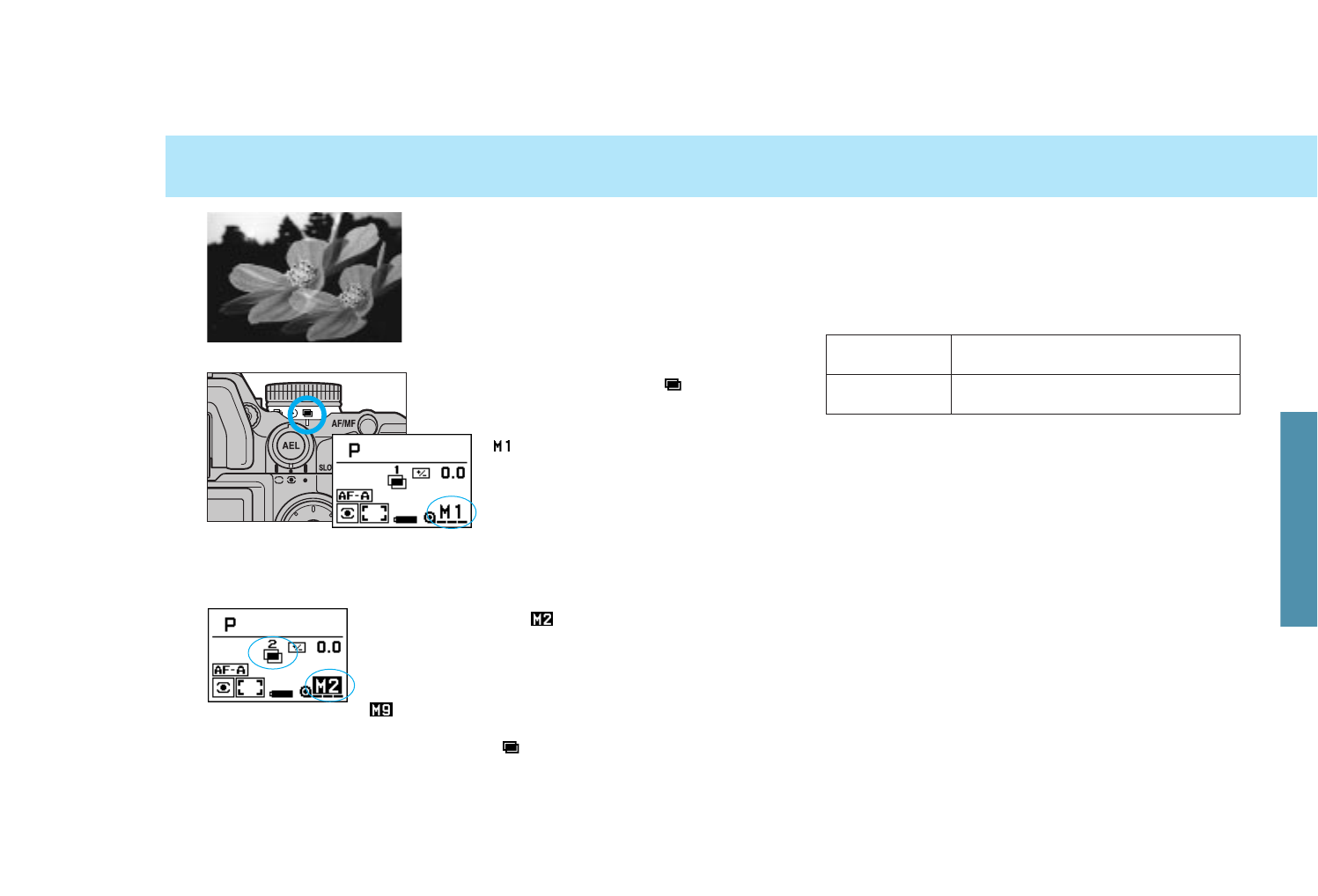
97
96
MULTIPLE EXPOSURE
The meter in your camera determines exposure (EV) based on the
assumption that only one exposure will be made on each frame.
When making multiple exposures, the EV for each additional
exposure may need to be reduced or over exposure can result.
Compensate the exposures as follows:
Number of
Exposures
Exposure
Adjustment
123468
0 -1 -1 1/2 -2 -2 1/2 -3
• The above corrections are intended as a general guideline. Some
testing may be necessary to produce the desired results.
• Compensation may not be necessary if all of the exposures have dark
backgrounds and the subjects of the exposures will not overlap.
• Exposure can be compensated in 1/2 or 1/3 EV increments using the
exposure compensation function (p. 77).
• The camera can be turned off and back on during a multiple exposure
series.
• When date/time imprinting is selected, the date/time will be printed
when the film is wound.
• When using negative film, tell your photofinisher there are multiple
exposures on the roll. Some photofinishers may not automatically print
multiple exposure.
• If Custom 3-2 is selected, you can partially rewind the film and overlap
an exposure on a previously exposed frame (p. 161-163).
1. Turn the drive-mode lever to
.
The multiple exposure function makes
it possible to expose 2 or more
images on the same frame.
• appears in the display’s
frame counter.
2. Compose the scene, then press the shutter-release but-
ton all the way down to take the first exposure.
• After the first exposure, appears in the dis-
play and is reverse printed telling you that the
next exposure will be overlapped.
• Take additional exposures as desired.
• Additional exposures are counted only up to
, but an unlimited number of exposures can
be taken.
• The number on the also increases up to 9.
3. Select another drive mode to cancel multiple exposure
mode and to advance the film to the next frame.
DRIVE


















